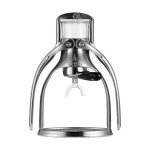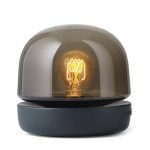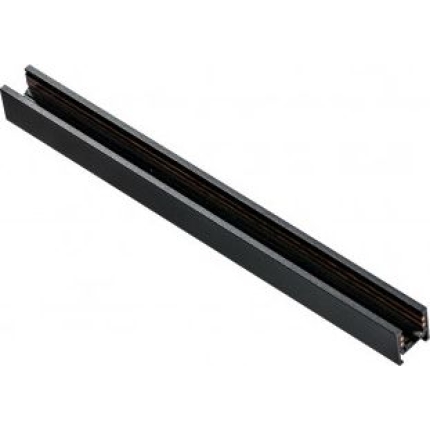Track Lighting Systems
Track lighting systems are a popular and versatile type of lighting solution for both residential and commercial spaces. Track lights provide directional light that can be used to highlight certain areas or objects in the room, creating an attractive look while also providing functional illumination. With track lights, you have complete control over where the light is directed so you can create different effects depending on your needs.
The most common type of track lighting system consists of several individual fixtures mounted onto a metal track that runs along the ceiling or wall. Each fixture has its own adjustable head which allows it to be adjusted independently from other fixtures on the same circuit, allowing for greater flexibility when setting up your desired design scheme. Additionally, each fixture contains multiple bulbs so they can easily accommodate different wattages as well as halogen and LED bulbs for added energy efficiency if desired.
Overall, installing a track lighting system offers many advantages compared to traditional overhead ceiling lights such as increased versatility in terms of placement options and brightness levels along with improved energy efficiency due to its ability to use low-wattage LED bulbs instead of more power-hungry halogen models . As such ,track lighting provides an ideal option when looking for ways improve both aesthetics and functionality within any given space without sacrificing too much time or money during installation process .
Do track lights need a transformer?
Do track lights need a transformer? The answer is yes, they do. Track lighting systems typically require a low voltage power source to operate properly and safely. This means that the electricity must be converted from the high voltage of an outlet to 12V or 24V depending on your system before it can be used in your track lighting system. A transformer is necessary for this conversion process and will ensure that you have safe, reliable operation of your track lights.
When selecting a transformer for use with track lights, there are several important factors to consider such as wattage rating and type (magnetic or electronic). It’s also important to make sure that the wattage rating of the transformer matches or exceeds what’s required by all connected light fixtures combined so as not to overload it—otherwise you risk damaging both components! Additionally, if using LED bulbs in particular then electronic transformers should be used instead due their compatibility with dimmable LEDs which magnetic ones lack support for these types of bulbs altogether.
In conclusion, while many people may not think about whether their chosen type of lighting needs one when setting up their space—track lights do indeed need transformers! Not only does this provide them with much needed safety precautions but allows them greater control over how bright/dim they want each fixture set at via its own dedicated dimmer switch too—making any room look stylishly lit up without having too harsh an effect on eyesight either!
What type of lighting is rail lighting?
Rail lighting is a type of lighting that is designed specifically for use on railway tracks. It provides a safe and efficient way to illuminate the track, allowing trains to move safely and quickly at night or in dark conditions. Rail lighting has been used since the late 19th century and continues to be an important part of modern railway systems today.
The most common type of rail lighting uses fluorescent tubes or LED lights mounted along either side of the track itself, providing uniform illumination across its length. This ensures even coverage so that train operators can easily identify any obstacles on the track ahead without having to look too far away from their cab window. Additionally, this kind of rail light also helps reduce energy costs by using less electricity than traditional incandescent bulbs would require for equivalent brightness levels over such large distances as those found in railways lines around world-wide networks .
Finally, there are other types available which provide additional features like motion sensors which can detect when something passes through them and automatically adjust brightness accordingly; these are particularly useful if you want your rails illuminated only when they’re being used rather than constantly throughout day/night cycles - reducing overall power consumption yet again! All these factors make rail lights an ideal solution for anyone looking into installing reliable illumination along their own private railroad line - whether it’s just one small stretch or multiple miles worth!
What is the difference between track light and rail light?
Track lights and rail lights are both types of lighting fixtures that can be used to illuminate a room or space. However, there are some key differences between the two that should be taken into consideration when choosing which type of light fixture is best for your needs.
The most obvious difference between track lights and rail lights is in their design. Track lighting consists of individual spotlights mounted on a metal track, while rail lighting features multiple lamps mounted onto one continuous bar-like structure called a “rail” or “monorail” system. This means that with track lighting you have more flexibility in terms of placement as each spotlight can be moved along the length of the track to suit different needs; whereas with rail systems all lamps must remain fixed at predetermined intervals along its length. Additionally, due to its linear shape and minimalistic appearance many people prefer the look provided by rails over traditional tracks – making them ideal for modern interiors where aesthetics play an important role in interior design decisions .
Finally, another distinguishing factor between these two types of light fixtures lies within their installation requirements: While both require some level electrical work (such as wiring) during setup , installing rails typically requires more complex tasks such as mounting it directly onto ceiling joists/rafters - something which may not always possible depending on your home layout . On top hand , tracks usually come pre-assembled so they simply need connecting up via existing power outlets before being hung from ceilings - making them much easier to install than rails .
In conclusion , although both provide excellent illumination solutions for any given space there are several distinct differences between these two popular forms offlighting including their overall designs ;installation requirements ;and aesthetic appeal – all factors worth considering when deciding what type will best serve your purposes
What components do you need for track lighting?
Track lighting is a popular way to illuminate any room in the home. It provides an even light distribution throughout the space, and can be used to create different levels of brightness or moods. Track lighting consists of several components that work together to provide illumination: track, fixtures, bulbs and connectors.
The track is usually made from metal or plastic and comes in various lengths depending on your needs; it has grooves along its length where you attach the fixtures with screws provided with each fixture. The fixtures come in many shapes including round, square or rectangular designs; they are available as single lights for spotlights or multiple heads for wider coverage across a wall area. Bulbs come in various wattages so you can choose how bright your overall system will be; LED bulbs are becoming increasingly popular due to their energy efficiency compared with halogen options which require more power input but produce more heat output than LEDs do. Finally connectors join sections of tracks together should you need longer runs than one section allows – these simply clip onto each other securely allowing easy installation without having to use tools such as screwdrivers etcetera
In conclusion then if you’re looking for an efficient yet attractive way of illuminating any room then track lighting could well be what suits best - just make sure that all components needed (track/fixtures/bulbs & connectors) are taken into account when planning out your project!



































































































